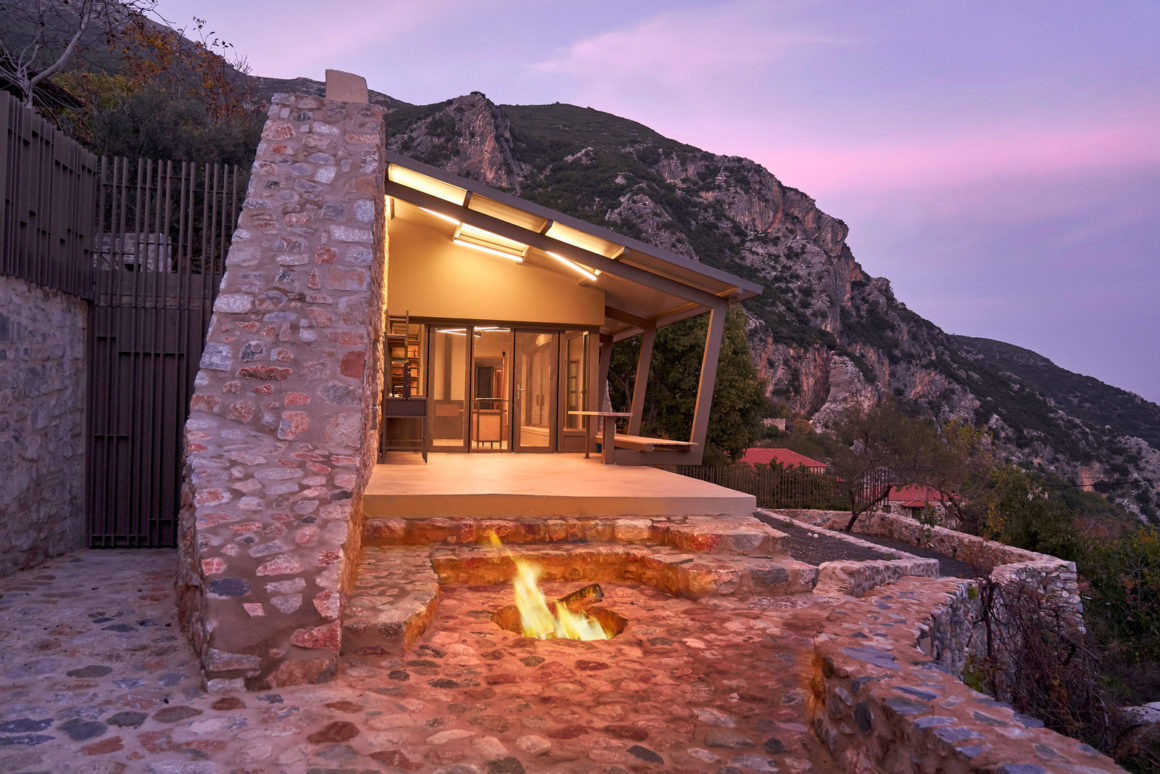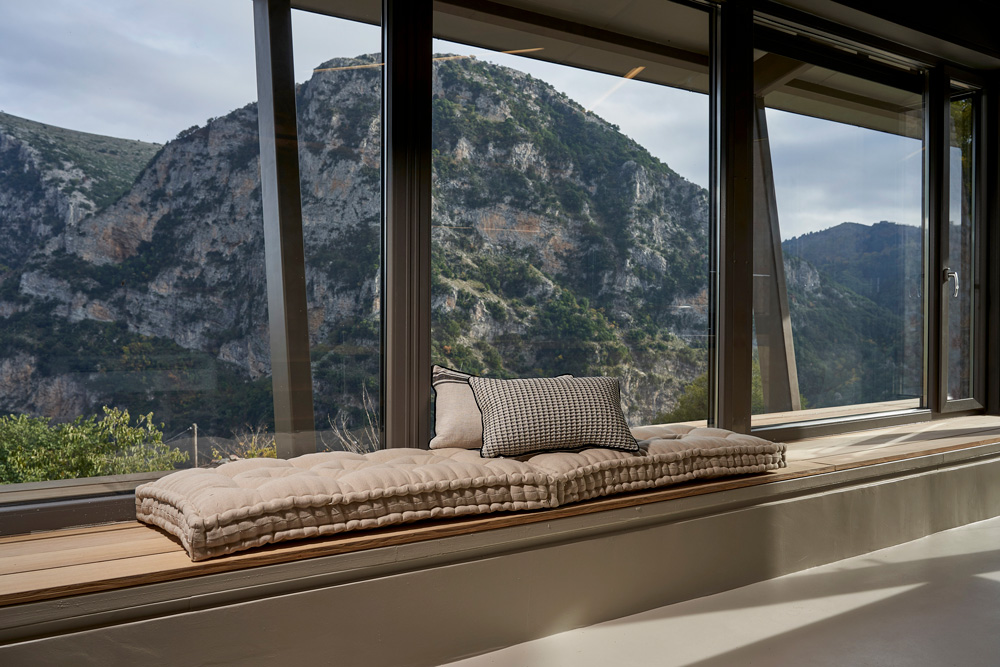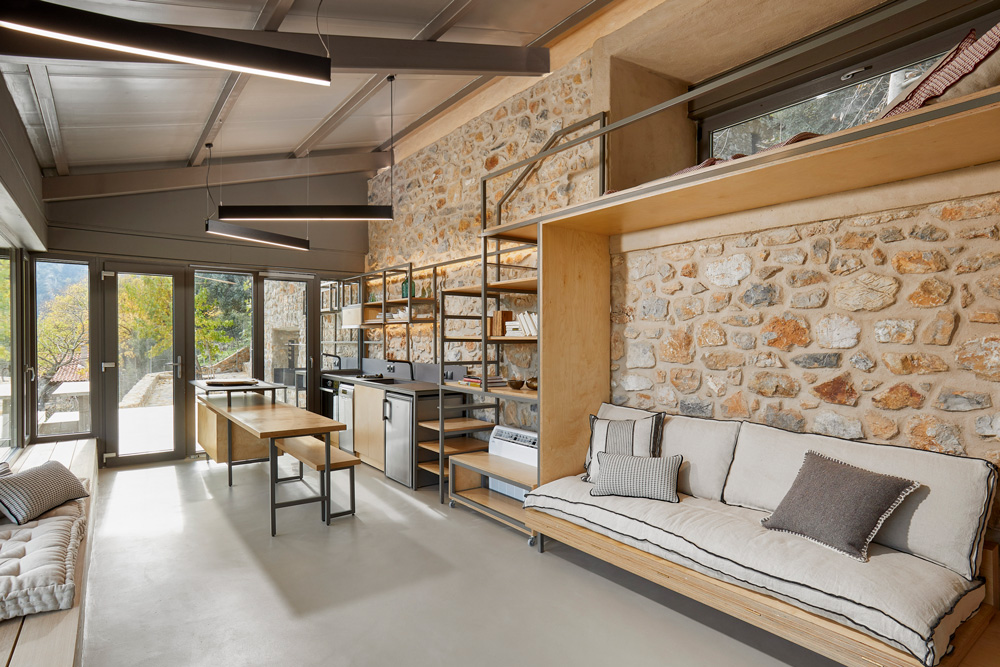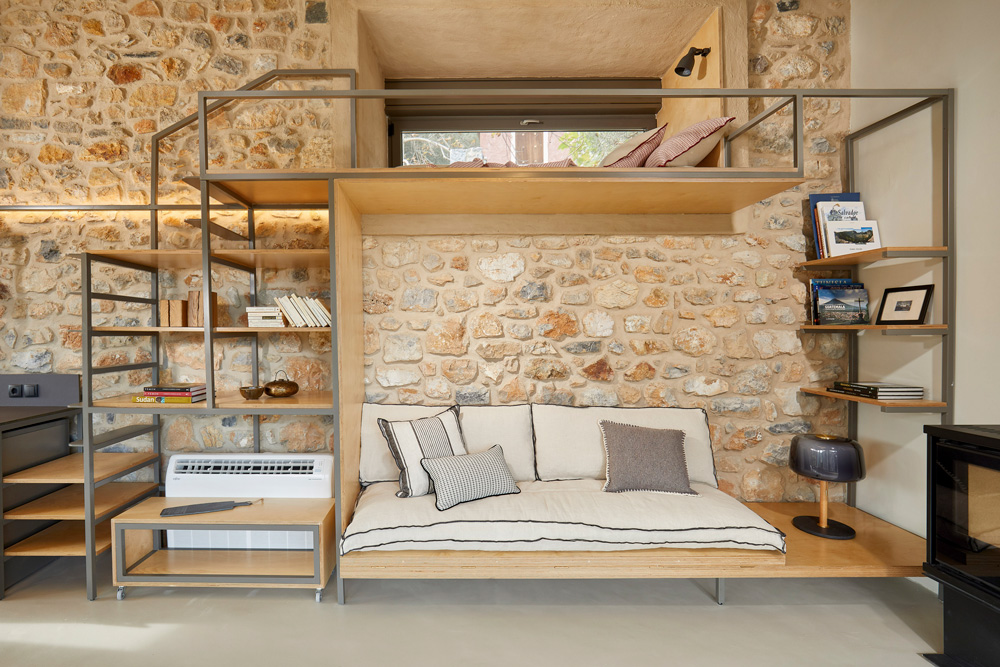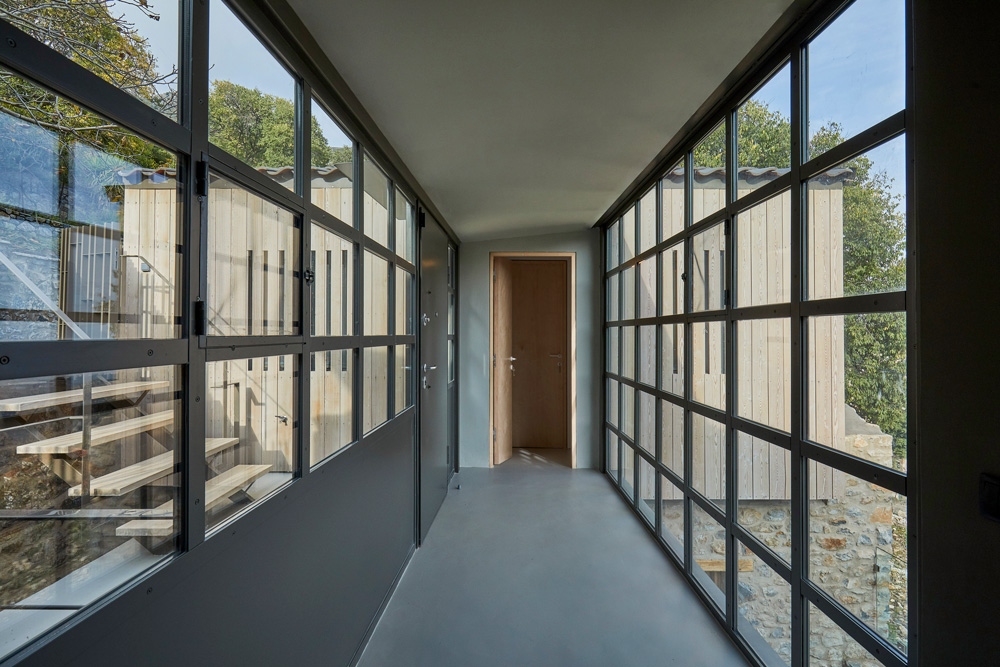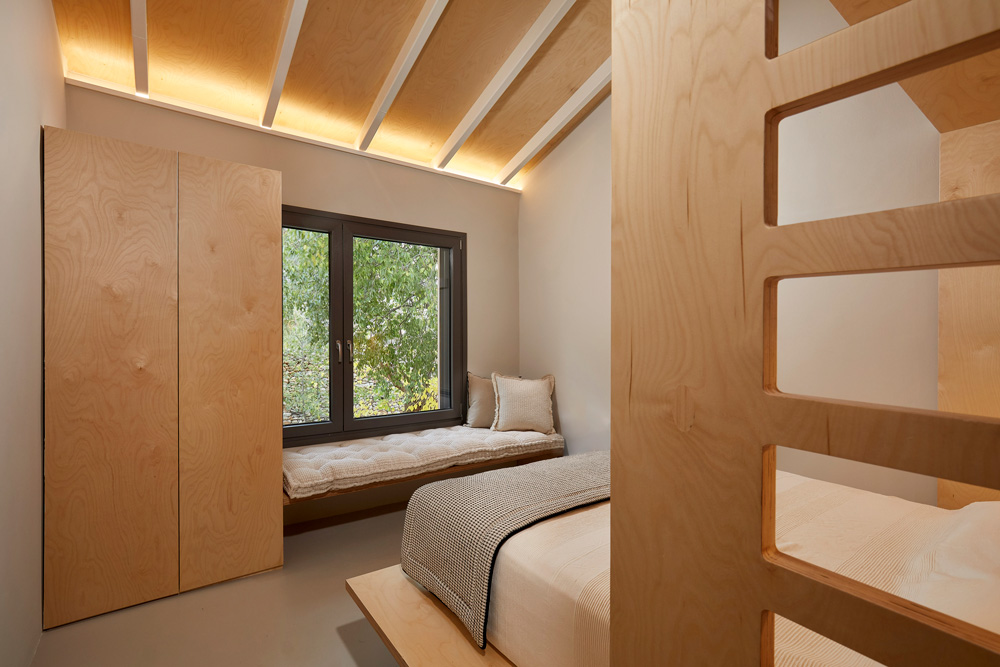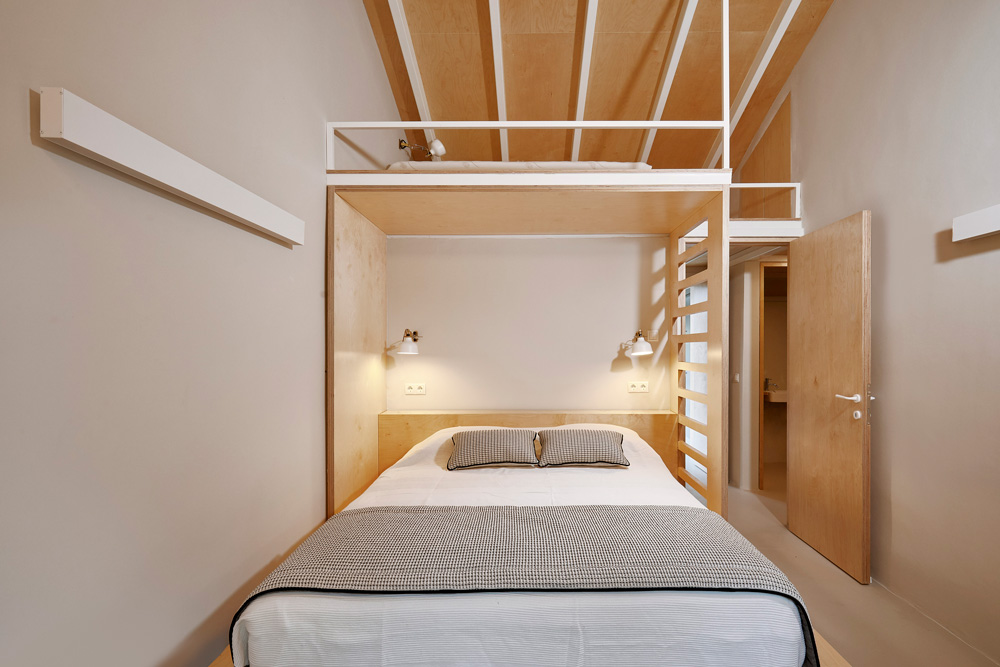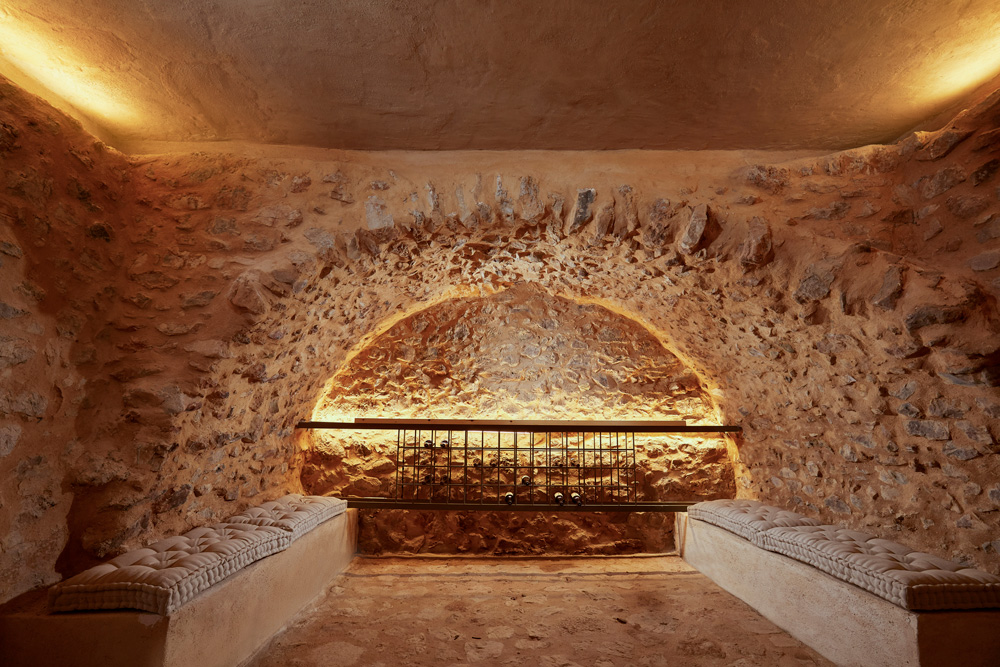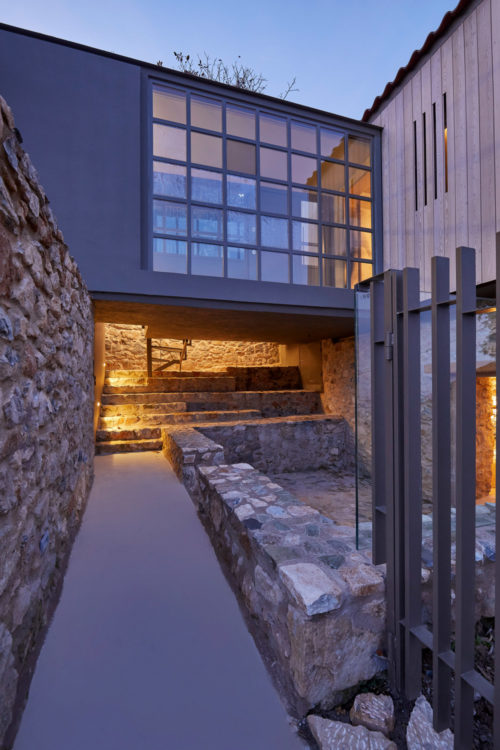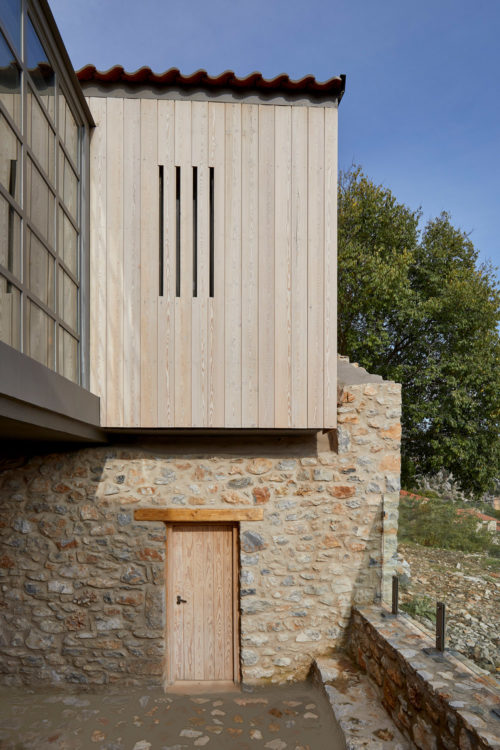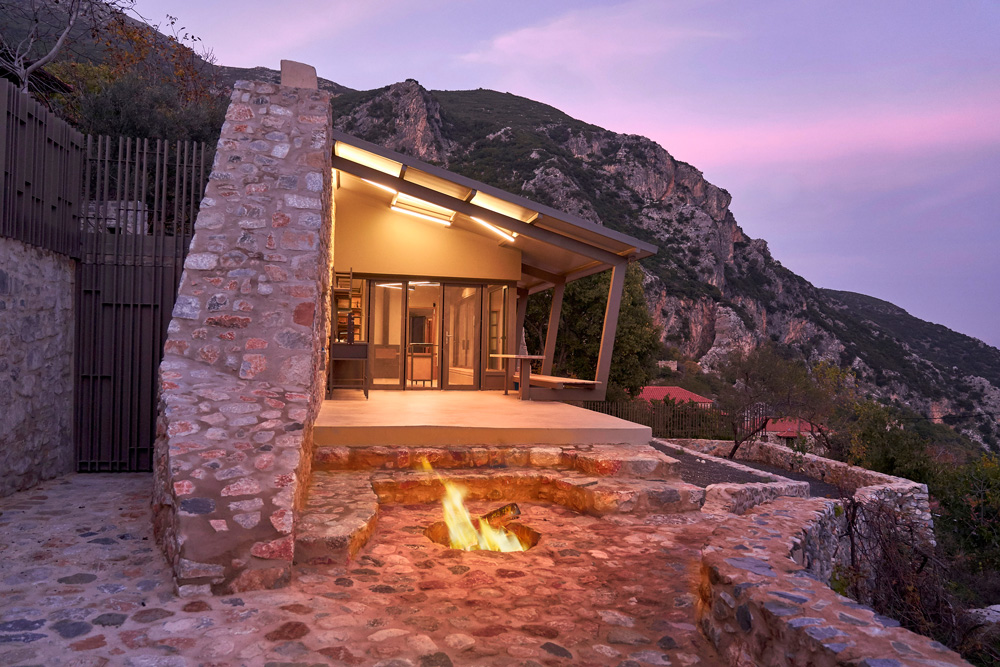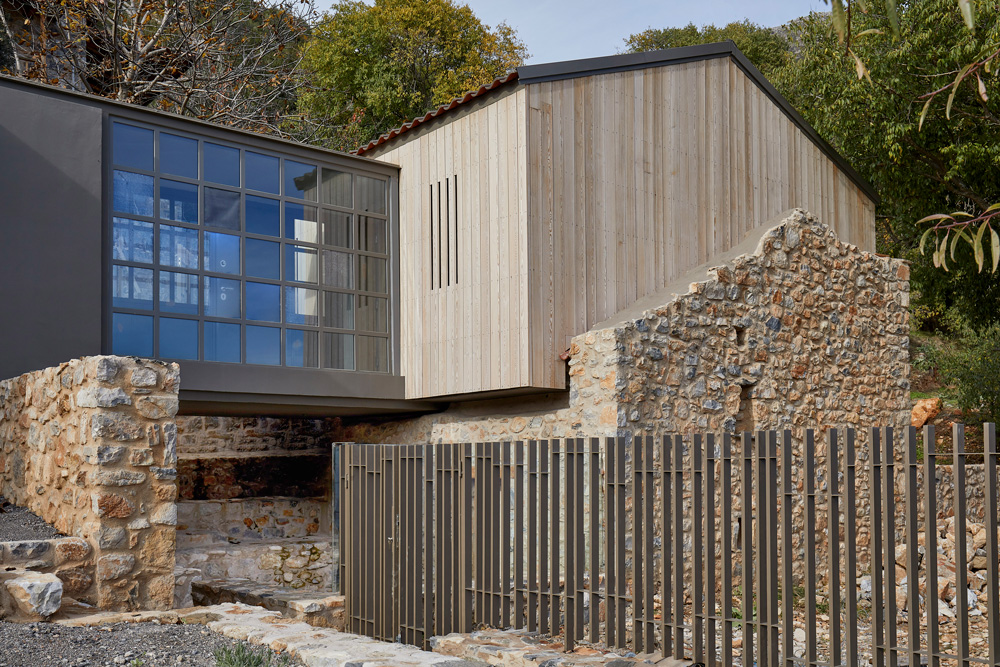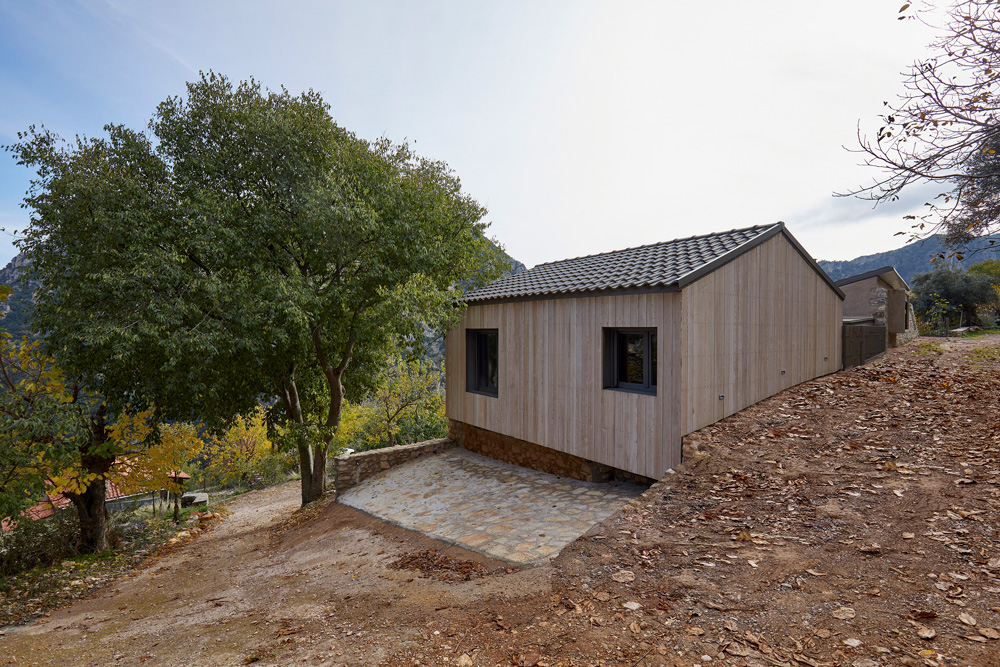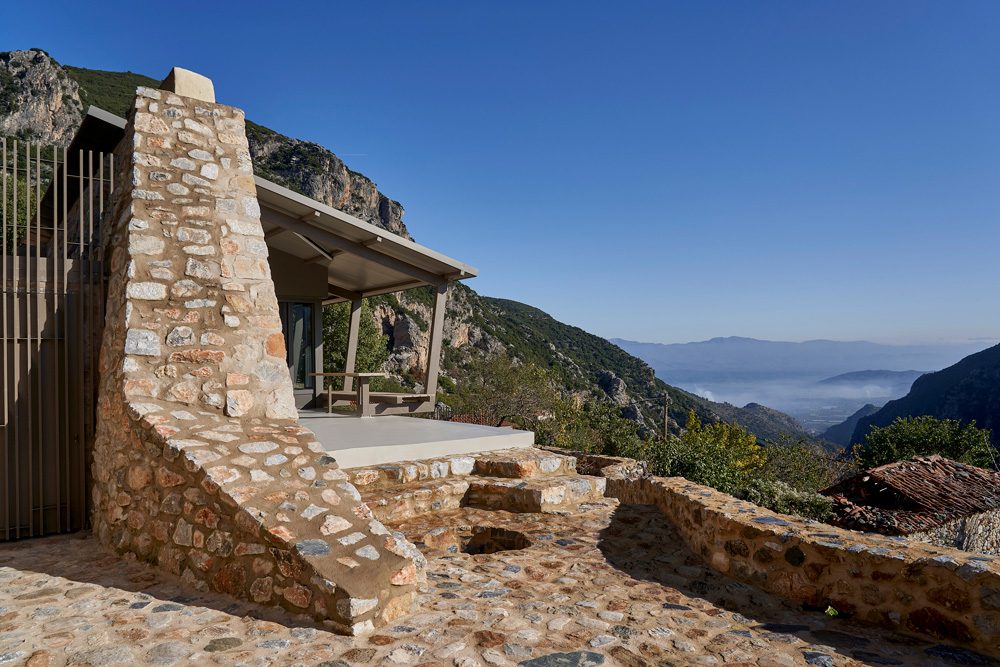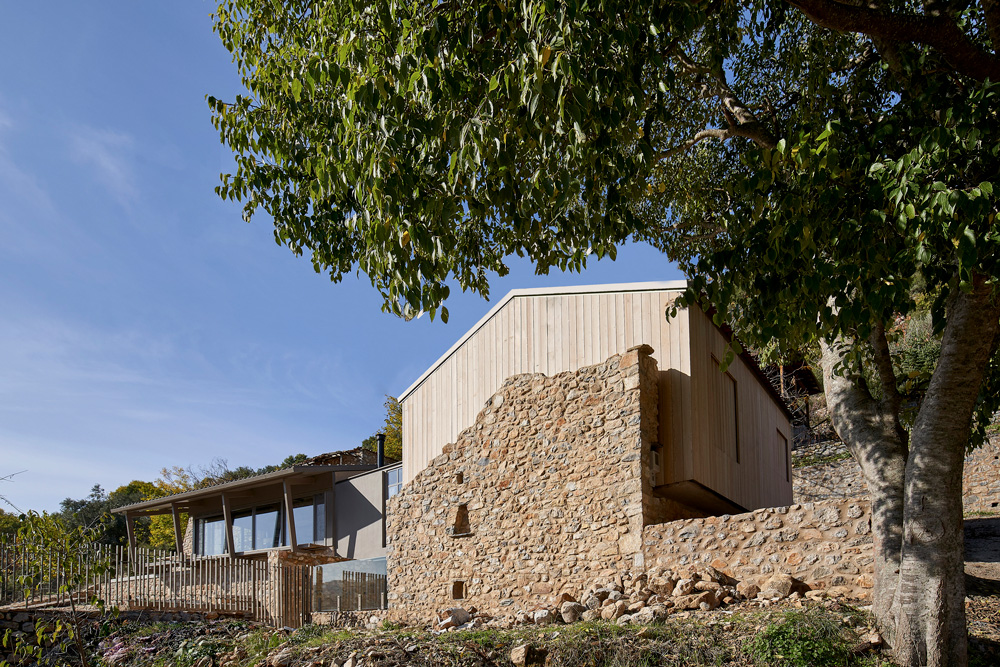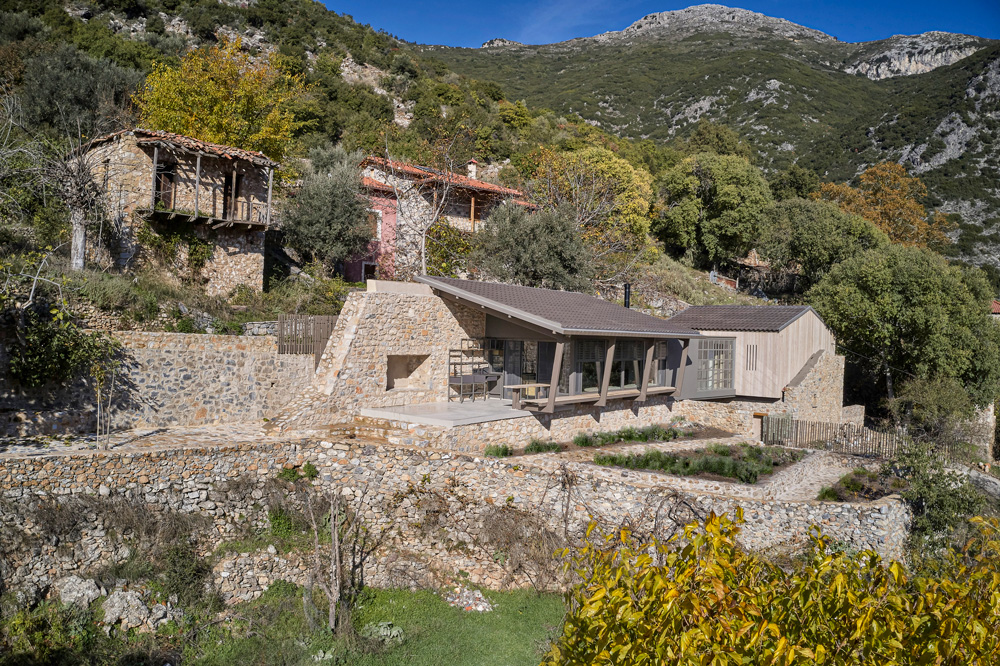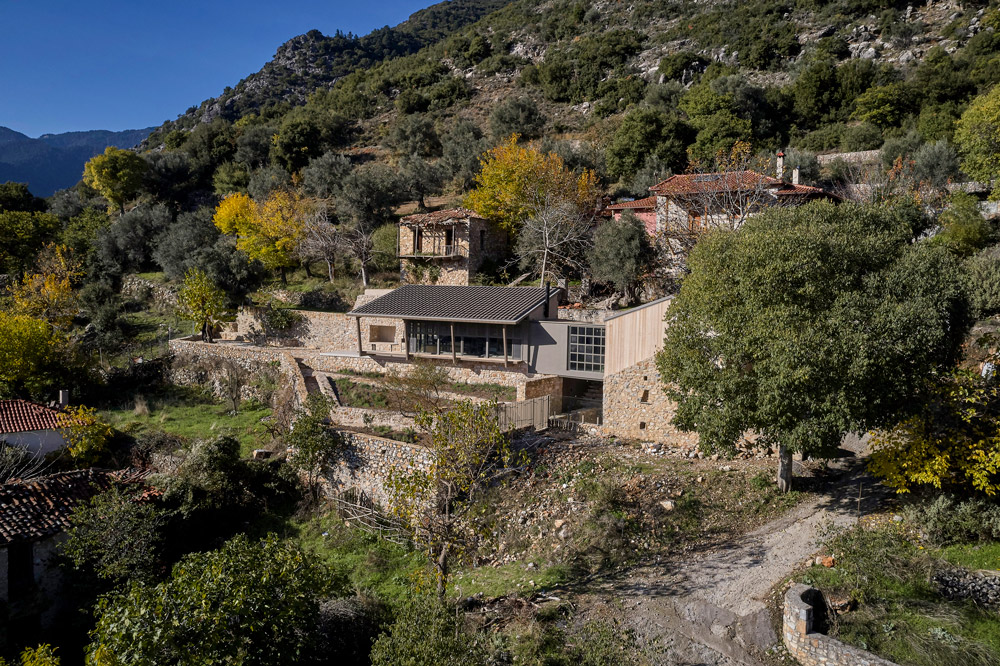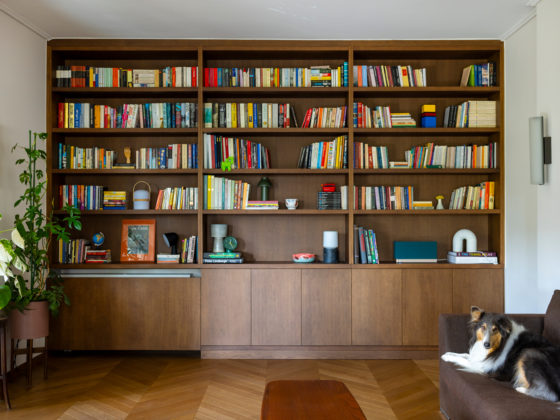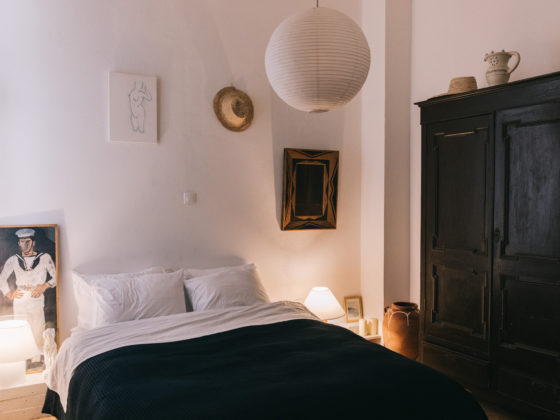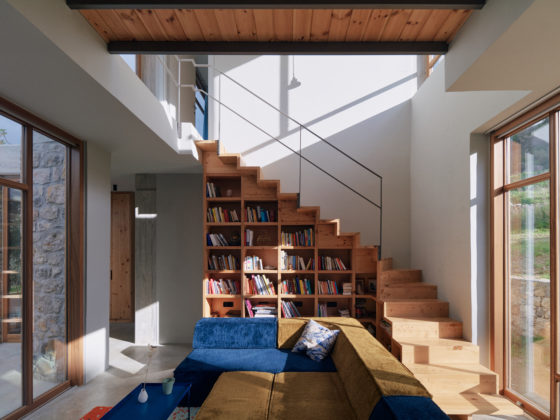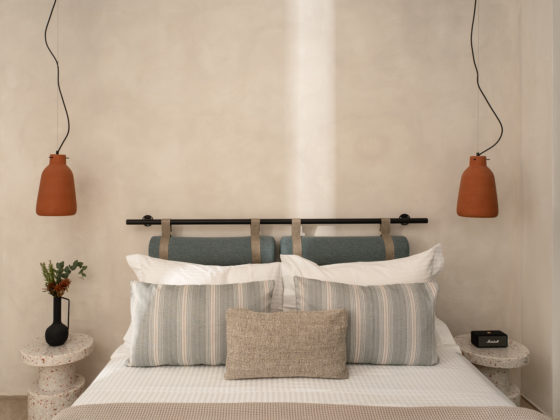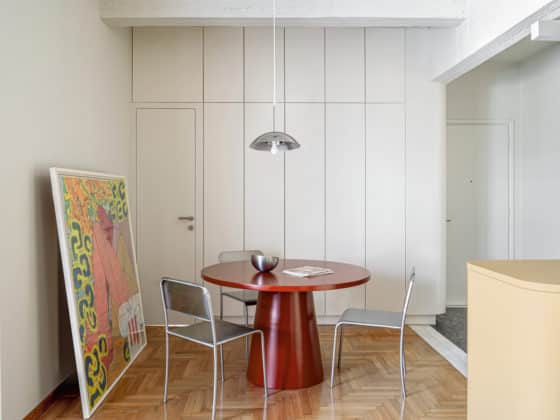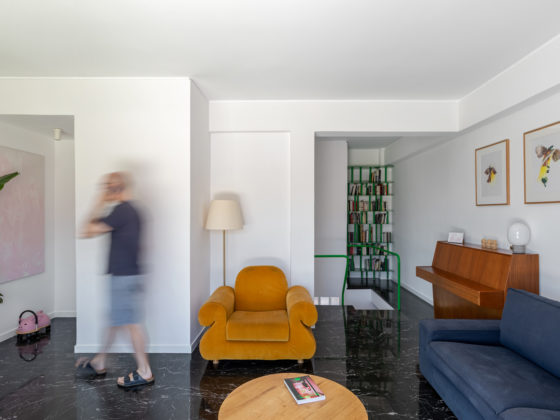The building is located in a Byzantine settlement on the eastern slopes of majestic Mount Taygetus. The surrounding area is one of outstanding natural beauty and forms part of the Natura 2000 Network.
Just as a yoik imprints the aura of humans and things onto the immaterial world of music, this house transports something of the soul of this mountain region into the material, contemporary world, utilizing vernacular forms and natural materials.
The plot of land contained a ruined stone building, used to house animals. The overall solution for the residence proposes a new layer of habitation above that of the ruin, symbolizing progress and creating new historical stratification in the succession of the village’s temporal and spatial layers of existence.
The house owner sought a winter sanctuary, whose size could be “modified”, for solitary use or for groups, when accompanied by family and friends. This gave rise to a modular construction with three distinct segments, which can be isolated or unified at will.
The original building is maintained and viewed as an interesting element from the past, a lingering memory imprint, without joining the remaining residence functionally, implies its different identity and origins.
The building has a small energy footprint; is built by small local contractors; and seeks to fuse traditional techniques with contemporary design.
